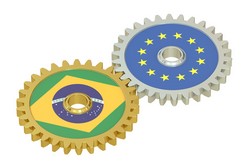Europe and Brazil team up to boost research in dynamical systems
Dynamical systems are mathematical objects that are used to model physical phenomena whose states change over time. These models are used in a broad range of applications, including financial and economic forecasting, environmental modelling, and medical and industrial equipment diagnoses. In recent decades, notable progress has been made in understanding the dynamics of low-dimensional dynamical systems. This led to the identification of new challenges, including high-dimensional dynamical systems, dynamical systems with particular structure and intrinsically non-autonomous dynamical systems. Understanding dynamical systems is key to improving the quality of models and the ability to extract useful information from these models and data. With EU funding, the BREUDS(opens in new window) (Brazilian-European partnership in dynamical systems) project gathered leading Brazilian and European institutions and groups to provide critical mass and support for research at the forefront of dynamical systems. The joint research programme relied on strong traditions in dynamical systems in both Brazil and Europe. This complementary expertise contributed to driving innovation and resolving open problems in the vanguard of modern dynamical systems research. Researchers made excellent progress in several key research topics, namely non-autonomous dynamical systems, ergodic theory, low-dimensional dynamics, Hamiltonian dynamics and bifurcation theory. Collaboration between the two regions resulted in many publications in international peer-reviewed journals. It also supported the work of many early-stage researchers who undertook doctoral work. Transfer of knowledge, project dissemination and training was facilitated by two conferences and five workshops. By carrying out world-class research, BREUDS helped to nurture closer ties in academia between the European Research Area and Brazil. In a data-driven world that places more and more importance on quantitative decision-making, a solid grasp of mathematical foundations is becoming increasingly relevant in the longer term.







